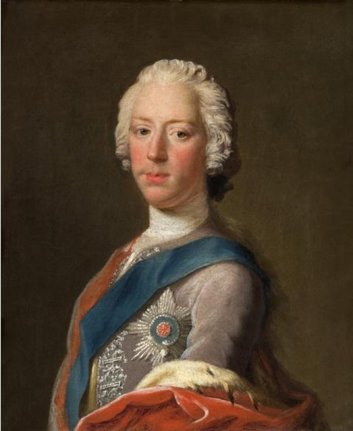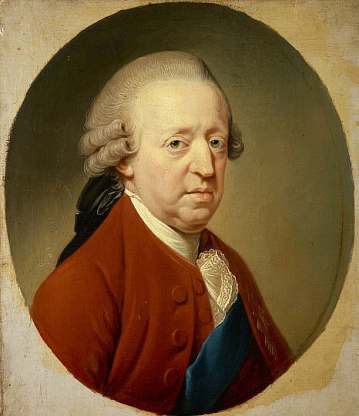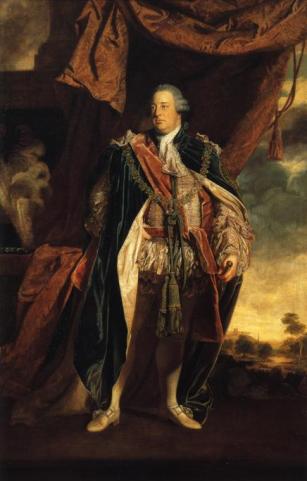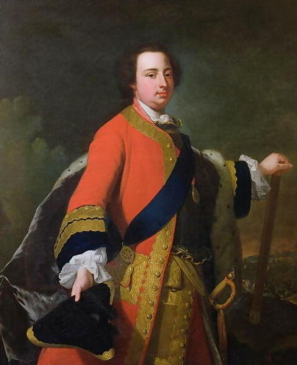Culloden is considered by many to be the end of the ’45 Rising but what happened to the two men who led the armies at this important battle?

Considering the Jacobites first, their leader, Prince Charles Edward Stuart did not fall at the battle but was able to escape the field. The day after Culloden those Jacobites who had been able to escape made their way to Ruthven barracks to regroup. Here they expected to find Prince Charles, but when they arrived they were met only with orders to disperse. Abandoning the cause Prince Charles spent the next five months on the run. He managed to find his way between loyal supporters and evaded the government’s roving eyes spending time in the Hebrides to the west of mainland Scotland. He was lucky in that his men never betrayed him but he knew if he was to survive in the long time he would have to make his way back to the continent.

Finally, in September 1746. Prince Charles met up with a French rescue ship and sailed to France. Initially he was greeted warmly but in 1748 following the Treaty of Aix-la-Chapelle , which helped bring the war between France and Britain to an end, he was expelled from the country. For several years Charles lived with his Scottish mistress, Clementina Walkinshaw and the two had a daughter, Charlotte in 1753. The relationship was not to last though and in 1760 it was over amid tales of jealousy, alcoholism and violence. Eventually Charles made his way to Rome and married nineteen year old Princess Louise of Stolberg-Gedern in 1772. Once again the relationship did not prosper and Louise left Charles in 1780 with claims of physical abuse. From 1783 Charles was known to be ill and was nursed by his daughter but not long after his 67th birthday he suffered a stroke and died on 31st January 1788.

On the Government side the Duke of Cumberland was initially hailed a hero in his defeat of the Jacobites and he quickly set about ensuring there would not be another rebellion. Amongst other things the composer Handel wrote ‘Judas Maccabaeus’ supposedly for Cumberland which contains the anthem “See the Conquering Hero Comes”. Cumberland was also was given the freedom of the City of Glasgow and made Chancellor of both Aberdeen and St Andrews Universities. He spent years trying to improve the army but as word of his brutal treatment of the highlands spread his reputation slowly became tarnished and he was given the name ‘The Butcher’.

In 1757 Cumberland was given command of the British forces in the Seven Years War but was defeated in the Battle of Hastenbeck. He was severely criticised for his defeat and publicly reprimanded by King George II. Cumberland resigned his office and retired to his estate. A leg wound he received at Dettingen, in 1743, never healed properly and he ended up gaining excessive weight before suffering a stroke in 1760. In 1765 whilst in London he had a heart attack and died on 31st October 1765 aged 44.
Prince Charles is probably the more ‘famous’ of the two men today with his story being romanticised over the years and his tale focussed on the year he was actually in Scotland. History was perhaps not so kind to Cumberland who is most known by his moniker ‘the Butcher’ more than anything else. It is safe to say though that Culloden was a key moment in both these mens lives. We hope you enjoyed this brief glimpse into their post-Culloden lives and as always please like, share, tweet, comment and visit us anytime.
All the best, K & D
Reblogged this on Adventures and Musings of an Arch Druidess.
LikeLike
I’ve learned more Scottish history on Twitter in the last 2 days than during
my school years.
LikeLiked by 1 person
Be careful – there’s a lot of bunk out there!
LikeLike
The village of Fort Augustus in the middle of the Great Glen is still named in honour of William Augustus, Duke of Cumberland.
According to Wikipedia, in that same glen, the town of Fort William and its shinty team are also named in honour of the “Bloody Butcher”!
LikeLike
Fort William is named after William of Orange.
LikeLike
It is NOT accurate to say that Charles Edward Stuart “abandoned” the cause. He never did to his dying day. To focus on the failed relationships he had with two women rather than all the efforts he made to return to Scotland is prejudicial to say the least. After Culloden, repeated consultations with Lovat, Cluny, and Locheil were about whether to continue with resistance movement in the Highlands or to go to France and return with support. Lovat encouraged the Prince to do the latter. Unfortunately, the Stuarts were no longer useful to Louis XV in his strategy and the promised help was no longer forthcoming.
LikeLiked by 1 person
[…] Who were the Jacobites? The Jacobites are followers of the exiled King James VII & II, and subsequently his son and grandson. They take their name from the Latin for James, Jacobus. […]
LikeLike
I have learned a great deal from the Culloden Battlefield site. My chief complaint is that apostrophes need to be added where pertinent. If these remarks are posted from a phone that might be why the punctuation is inaccurate.
LikeLike